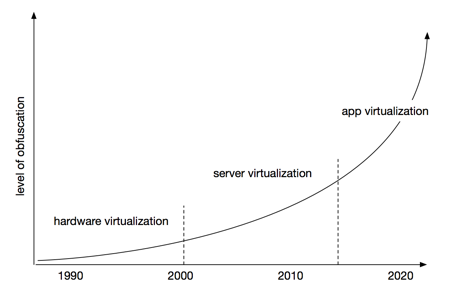History
Virtualization has come a long way. In 1987 RAID (redundant Array of Independent Disks) was the first introduction to obfuscating what was really happening on a lower level to one level above. Dozens of layers of obfuscation have been added over the last 30 years that it is today wildly know as virtualization. It wasn’t until VMware came to market with their server obfuscation that this methodology would be adopted by many competitiors.
Intel
The direct result of virtualization was that by adding more layers of obfuscation we were able to increase speeds and lower the overall latency. Lately there has been a great discussion whether or not the obfuscation should happen on top or within the kernel of the virtualization operating system.
VMware and Intel, whom have always had a great partnership, will now come forward with the next step; HyperSocket Infrastructure. The basic concept is that HyperSocket Infrastructure will run completely in the CPU, without the need of an operating system kernel. Today for a process to be completed it traverses the Hypervisor Kernel and the Hardware at least 7 times. The speed increase by doing everything within the processor will be exponential.
VMware has already succesfully reduced their kernel footprint when they changed from ESX to ESXi. This time the software will be even skimmed down so far that it will only use processor instruction sets instead of compiled program languages. The name HyperSocket was chosen to identify that to be able to run this new architecture one will need at least 4 sockets or more (hyper = 4 dimensions in geometry).
Future
It’s not yet known whether this will be in the next vSphere release (v10) or already in the next intermediate update. [note: VSAN was introduced in vSphere 5.5 so HyperSocket Infrastructure could be introduced in v6.6].
During the press briefing we already had a view on the future roadmap of Intel and VMware where they showed that HyperSocket Infrastructure is just the first step to a new era of Application Virtualization where the need of DataCenters will completely be eliminated and everything will virtualized within the processors of client devices such as self-driving cars and smartwatches.
Read more in the joint press release here.

Obviously I am biased here, working for Nutanix and all, but this obviously takes the concept of vendor lock-in to a whole different level. What about choice, what about being open? What about virtualization at the application layer instead of building the hypervisor operating system calls into the CPU?
All in all, I’m very sceptical about the future of this announcement, but the press release wasn’t bad…
Hi Bas, that is exactly where this is going. Legacy web-scale infrastructures, that in essence have always just been bolt-on methods, will definitely suffer from this new technology
😉
I’m pretty sure HyperSocket won’t be out until vSphere 6.6.6
RIMSHOT! 😀